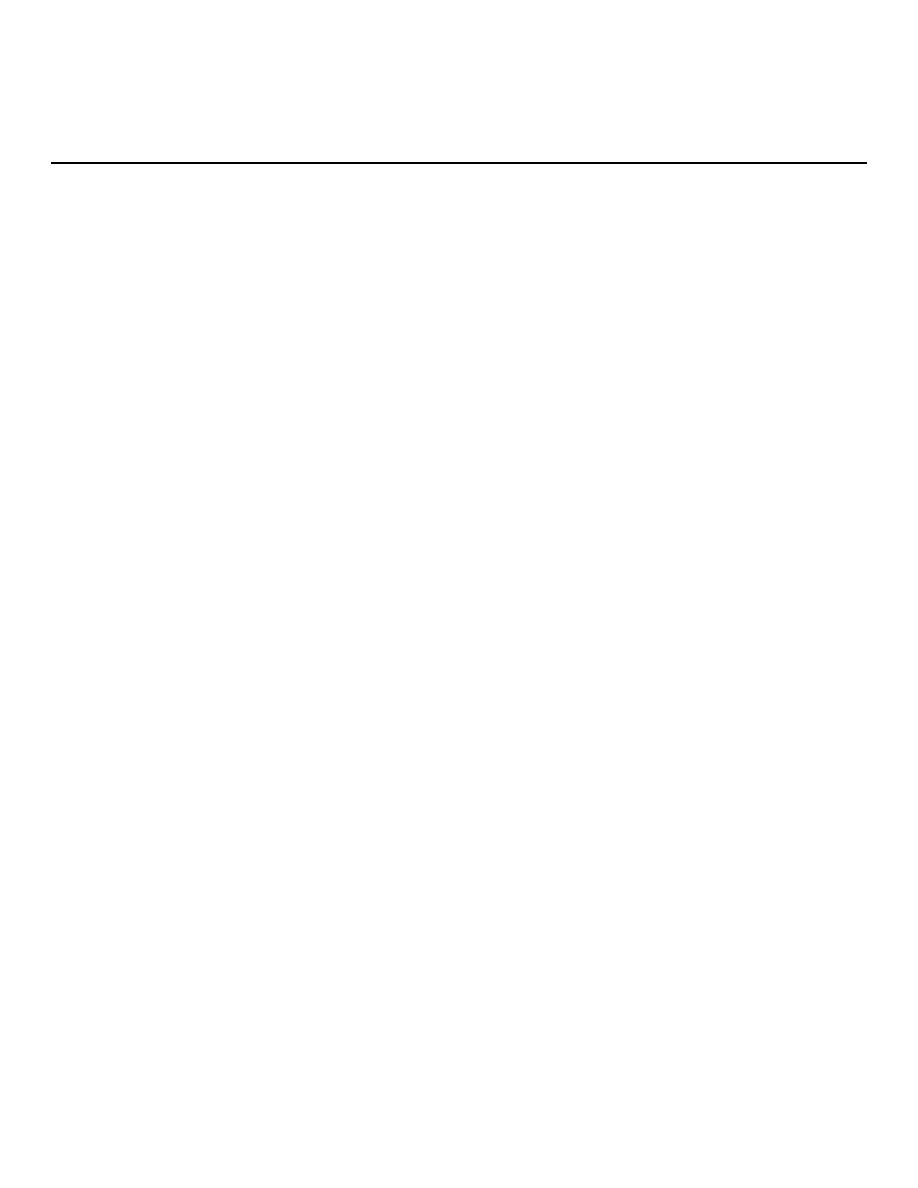 |
|||
|
|
|||
|
Page Title:
Chapter 2. CLEANING, PAINTING, AND FINISHING |
|
||
| ||||||||||
|
|
 TM 750-245-4
CHAPTER 2
CLEANING, PAINTING, AND FINISHING
Section I. INTRODUCTION
The safety aspects of cleaning, painting, and finishing
2-1. General
are well-defined in existing maintenance instructions
This chapter covers the inspection requirements for
and regulations and are not discussed here. The
cleaning, painting, and finishing.
These three
inspector is cautioned, however, to be aware of these
requirements are grouped into this chapter because of
requirements to insure that noncompliance does not
their applicability to all components.
cause poor quality performance.
2-2. Safety
Section II. CLEANING
specifications and maintenance standards.
This
2-3. General
inspection should also include inspection of cleaning
a. The QC inspector must insure that all items on
materials to insure that the proper materials are being
which maintenance has been performed are clean. This
used.
will require in-process inspections as well as final
inspection.
2-6. Cleaning Inspection
b. The objective of cleaning is the removal of
These inspections insure that the equipment is clean
contaminants which would impair equipment operation.
and ready to be returned to service. The QC inspector
An item is satisfactorily clean that has been cleaned by
should reject any equipment which shows the following
one of the specified processes and no smudge appears
defects:
when inspected by wiping with a clean, lint-free tissue
paper. Stains caused by fungus or corrosion are
dust, filings, dirt, sand, carbon; wire ends and insulation;
acceptable as long as the parts are functionally
phenolic or ceramic chips; foreign material, of any kind,
satisfactory.
including any particles that could loosen or become
dislodged during the normal life of the equipment.
2-4. Facility
b. Fungus, mold, or any other organic growth on
Random inspections of equipment should be performed
any item.
by the quality control inspector. These inspections will
determine that the equipment and cleaning facilities are
c. Oil, grease, cooling compound, wax, or other
adequate. Any equipment which is not in full accord
residue on items not requiring lubricants or protective
with applicable cleaning standards should be regarded
coatings.
as defective. Corrective measures must be taken
d. Rust, scale, powder, or other corrosion products.
immediately to insure proper cleaning of applicable
e. Paint on rubber gaskets, seals, plastic or
components.
ceramic items, glass and mechanical surfaces.
f. Alkaline or acid residues. (Checked with litmus
2-5. Processes
paper.)
Each cleaning process in use should be inspected
periodically to insure conformance to applicable
Section III. PAINTING AND FINISHING
2-7. General
b. Thorough cleaning by an approved technique is
the first essential procedure in any effective painting or
a. Painting and finishing are covered in the same
finishing method. No painting or finishing method will
section because of their interrelationship. The purpose
protect a part if contaminants or contaminating
of painting and finishing of material is to improve its
general appearance, prolong its life, and keep corrosion
factors to an absolute minimum.
2-1
|
|
Privacy Statement - Press Release - Copyright Information. - Contact Us |